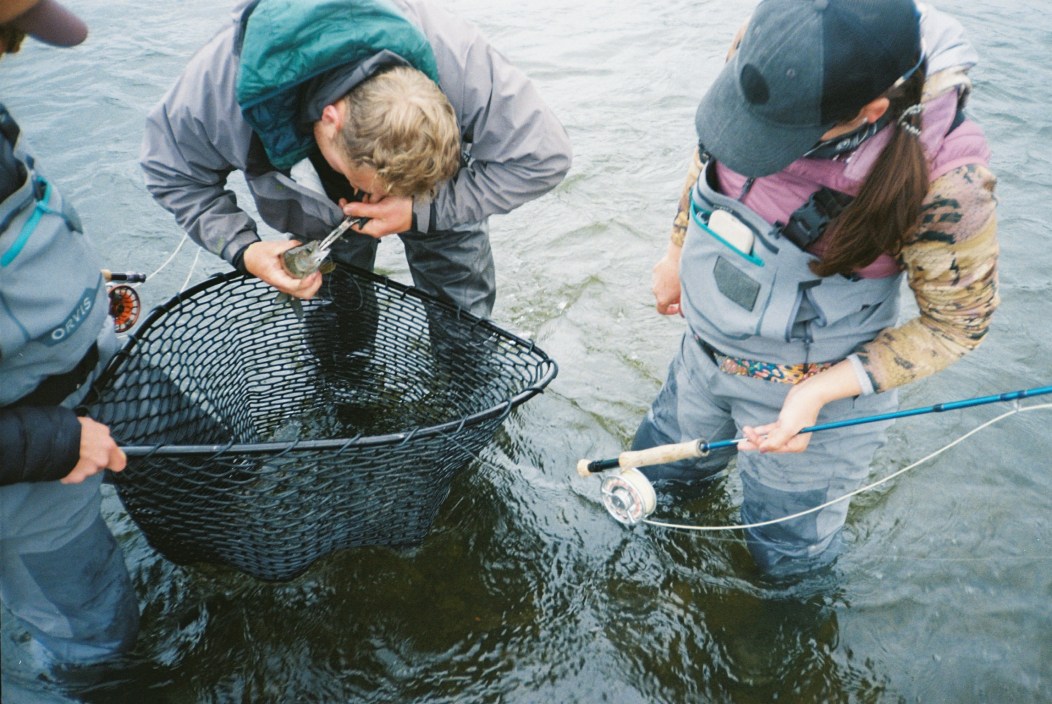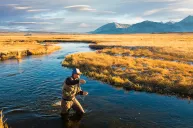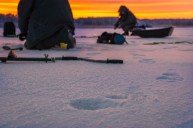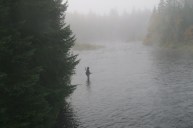When my friend called me with news that she had a last-minute opening on her Alaska fly fishing trip this July, I about jumped through the ceiling.
I'd been to Alaska once before: The U.S. Geological Survey hired me to help with a research project on emperor geese in 2017. Ever since, I'd been dreaming up ways to return to the Last Frontier—and being invited on a nine-day fly fishing trip with Alaskan Remote Adventures provided the ideal reason to visit again.
Although I was thrilled about the opportunity to fly fish 250 miles west of Anchorage in remote Alaska, I had no idea what to expect. Based on my prior experience in the state, I assumed it would be cold and wet and that the sun would never set. I knew I'd need a lot of mosquito repellent, my best fly fishing setup, and lots of warm layers. Here's what I brought on my Alaska fly fishing trip to improve my chances of a big catch—and stay dry and comfortable while putting fish in the net.
1. Fly Fishing Equipment
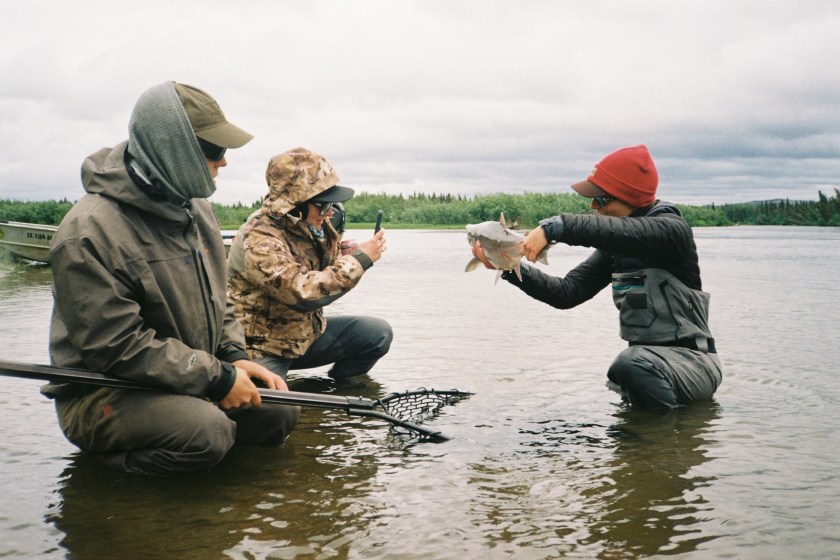
Gabriela Zaldumbide for Wide Open Spaces
Most fly fishing outfitters provide rods, reels, line, leader, tippet, and flies for you. However, gear owned by outfitters is well-loved by many clients and may show signs of wear and tear. It's also usually not the fanciest or newest equipment. Given those considerations, it's worth packing your own fly rod setup, especially if you're particular regarding gear.
Fly Rod
For a remote Alaska fly fishing adventure, consider packing your own 7- or 8-weight fly rod. If you're used to stocker trout like me, this may mean visiting Orvis. You can expect to run into fish in remote Alaska ranging from under a pound to over 10 pounds; although these heavier rods will be slightly overpowered for something like a 20-inch rainbow trout, they can still bring them in. And if a chum salmon bites, you'll be prepared for that, too. You'll also have an easier time casting a heavy fly in windy conditions.
My pick: I used the Orvis Helios 3D in 7 Weight and loved it. It's a dream to cast, strong enough to bring in 10-pound chum salmon, and allowed me to experience an incredible fight with each fish.
Fly Reel
Given the variety of fish you can encounter on an Alaskan river, you'll want your reel to be able to handle everything from a big rainbow to a king salmon. You'll be good to go if your reel has an excellent disc drag system and can hold at least 150 yards of backing.
My pick: I paired my rod with the Orvis Mirage Reel, rigged up with full sink or sink-tip line, appropriately sized leader and tippet, and a heavy streamer tied on. This reel is incredibly smooth and handles tons of action like a pro.
Flies
At the lodge where I stayed, the fishing guides tied flies every night after dinner for us to use the next day. I watched as they neatly wrapped hooks far larger than I ever use in Colorado with pink and purple feathers and metallic flash. My guides made me feel grateful that I didn't pick up any flies before my trip, though I usually enjoy doing that; it's fun to shop for something new yourself and catch a fish on it, too!
If you want to buy flies for your Alaskan fly fishing trip, research what to purchase first. Because most of my fly fishing is done in Colorado, I typically go for flies in drab colors that look natural. However, Alaskan salmon flies look nothing like that: They're aggressively bright, gaudy, and eyecatching. They're also almost exclusively streamers.
My pick: If you're shopping for flies to bring to Alaska, check out Umpqua's Alaska Selection. The flies in this kit look exactly like what my guide tied.
What You Won't Need: Floating Line
Floating line doesn't really have a place in remote Alaska. When interviewing my fishing guides, they explained that the trout and arctic char rarely, if ever, eat bugs there. Trout and char come in behind the salmon for a specific reason: They eat salmon eggs and rotting salmon flesh. This is quite different than the trout found in the Lower 48, which consume a lot of invertebrates.
Due to the Alaskan fish's meat-based diet and typical salmon behavior, sinking line is far more effective at catching fish in Alaska than floating line. That is, unless you're fishing for grayling, and they happen to be feeding at the surface. In that case, swap out to a lighter rod rigged with float line and a dry dropper.
2. Waterproof Apparel
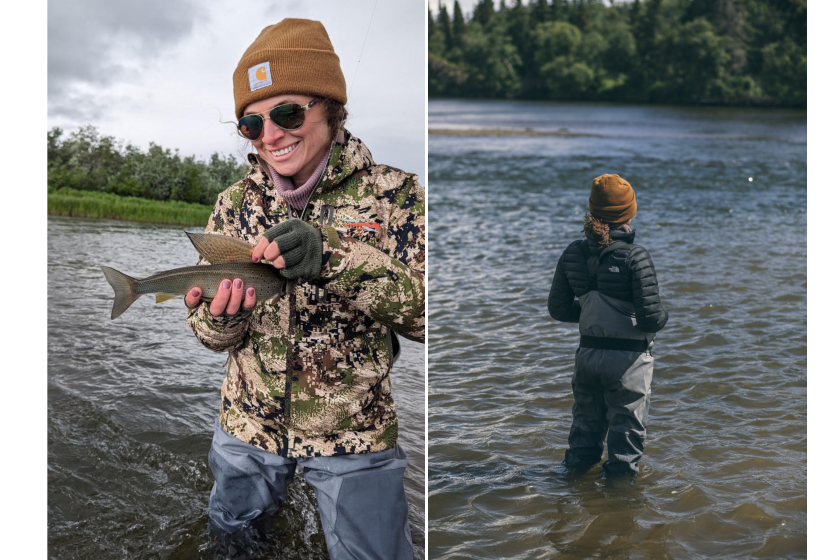
Gabriela Zaldumbide for Wide Open Spaces
Waterproof Rain Jacket
This is one item you do not want to forget; it rained on us daily, usually for several drizzly hours at a time. Western Alaska is quite damp and humid, and it would've taken forever for my layers to dry out if I got soaked every day. Having a high quality waterproof jacket made my trip.
With my jacket, I could wear layers underneath and easily take it on and off multiple times a day as the air temperature and precipitation warranted. My coat also had zippered vents in the armpits to let out excess heat without letting the down jacket I wore underneath get wet from rain.
My pick: While other folks' jackets would eventually get saturated, my Sitka Women's Cloudburst Jacket, never absorbed water so I stayed dry all day. The GORE-TEX material with high quality zippers kept the wind and rain out.
Waders
When fly fishing in Alaska, it's a foregone conclusion that you'll wade out into streams and rivers, get rained on, and be splashed by the boat. Fully waterproof waders help keep your lower limbs warm and dry in these soggy conditions, especially if they're insulated, and even more so if you check them for holes before your trip. Mosquitoes can't bite you through waders, either.
My pick: My breathable Orvis Pro Waders worked like a charm to keep water out and had a roomy enough fit for me to layer up for warmth underneath without making me feel mired down.
Wading Boots
You'll want to pair those insulated waders with wading boots that have rubber soles—a requirement in Alaska. In fact, in 2012, the state outlawed felt-soled wading boots for freshwater fishing due to the harmful organisms that can cling in the fibrous material and cause cross-contamination when worn in different waterways.
You may not have to buy and pack new boots if your outfitter has wading boots available for you to use. But if you opt to purchase your own, your wading boots should be light and comfortable enough to wear all day, with a solid lug pattern on the rubber sole to keep you from sliding on slippery river rocks.
My pick: I brought along the Ultralight Wading Boot from Orvis, which ticked the above boxes and kept my feet dry and toasty.
3. Warm Insulating Layers
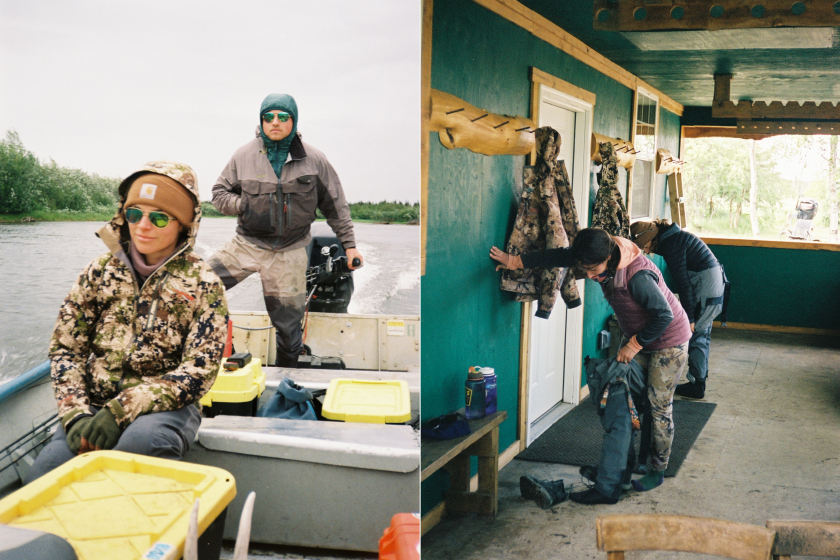
Gabriela Zaldumbide for Wide Open Spaces
Wool Baselayers
Before we arrived, our guides told us that cotton was not allowed at the lodge, and for a good reason: Cotton is not great at keeping you warm in wet and cold conditions. Instead, they recommended bringing wool layers, and I took their expert advice.
My pick: Smartwool leggings and long sleeve shirts kept me cozy and warm inside my rain jacket and waders all day. They also held their heat if they happened to get wet. If the weather warmed up enough to remove my outer layers, the wool long-sleeve kept me comfy and protected from the sun, too.
Smartwool Women's Classic All-Season Merino Base Layer Long Sleeve - from $85
Insulated Jacket
The weather fluctuated wildly during my time in Alaska. One afternoon, we'd have constant 25-mile-per-hour winds. The next day, it'd dump rain. The day after, it'd be overcast, breezy, and 45 degrees out. These conditions make layering essential, and I always love a down-based layer when it makes sense to include. Down is also super-packable, and this feature made a difference when it came to stuffing all of my layers into the top of my waders. However, if you aren't inclined to bring your best down coat to remote Alaska, a jacket with synthetic insulation is a great option, too.
My pick: Because I had such an excellent raincoat, I confidently brought my favorite down jacket, The North Face Women's Stretch Down Jacket, mostly to use as a mid layer on cooler days. That said, its water-repellent exterior came in handy when netting and holding fish without my rain jacket on. Its shell is also stretchy, which kept me comfortable while casting and climbing in and out of a boat.
4. Polarized Sunglasses
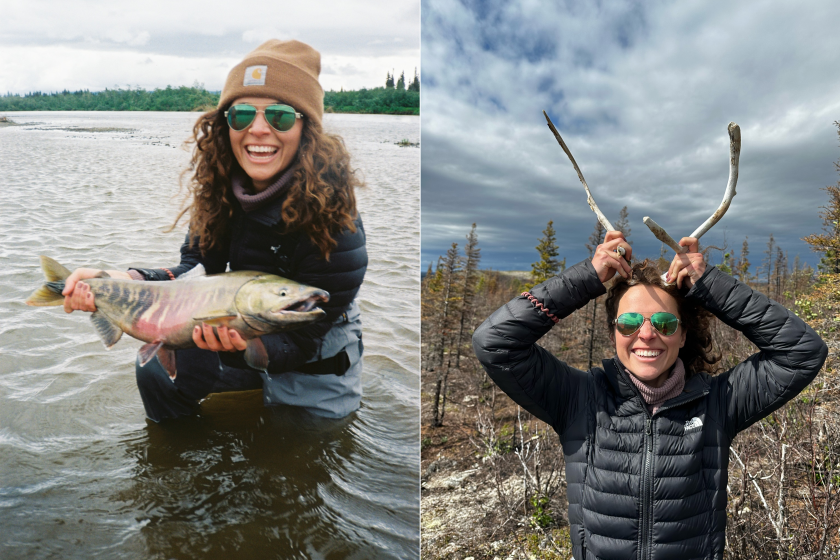
Gabriela Zaldumbide for Wide Open Spaces
Polarized sunglasses are highly useful when fishing for salmon. These fish almost always swim in schools, and polarized lenses make it easy to see them from above the surface in clear Alaskan rivers. That said, depending on the time of year, it may not be super sunny there. Most of the days I was there in early July were overcast. If you get lucky, you might need your sunglasses for sun protection for an hour or two each day. Be prepared and bring lenses that work really well in dim conditions, such as gray-tinted ones.
My pick: Costas are my go-to because they're highly functional and look great. Their mirrors are scratch-proof, and their lenses are impact-resistant and 20 percent thinner and 22 percent lighter than average polarized lenses. Their lenses also protect against both UV and HEV light. Costa manufactures prescription glasses, too. The brand offers a repair program in case something happens to your sunglasses.
READ MORE: How to Plan and Prepare for Your First Backpacking Trip
